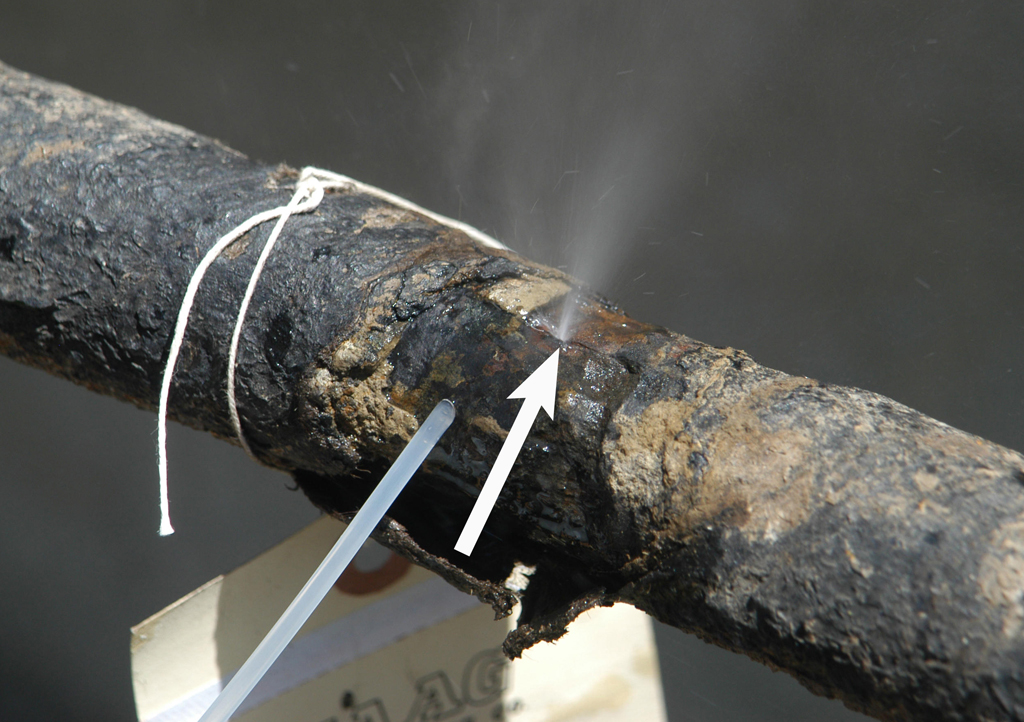 |
The Agency has estimated that approximately 70,367 tons per year of VOCs and 9,357 tons per year of HAPs have been emitted from equipment leaks. Many federal regulations under New Source Performance Standards (NSPS) at 40 CFR 60 and National Emissions Standards for Hazardous Air Pollutants (NESHAPs) at 40 CFR 61 and 40 CFR 63 require the implementation of LDAR programs. LDAR programs are generally composed of four steps:
- Identify components to be included in the program.
- Conduct routine monitoring of identified components.
- Repair any leaking component.
- Report monitoring results.
Best practices for LDAR programs
Facilities with an effective record of preventing leaks integrate an awareness of the benefits of leak detection and repair into their operating and maintenance program. These best management practices have proven to be instrumental in helping facilities achieve more consistent results in their LDAR programs, leading to increased compliance and lower emissions.
Forget expensive calls to lawyers and consultants. With Enviro.BLR.com, you get instant access, 24/7. Try it out today and get the 2015 EHS Salary Guide, absolutely free. Download Now.
- Have a written LDAR program. A written LDAR program specifies the regulatory requirements and facility-specific procedures for recordkeeping certifications, monitoring, and repairs. A written program also delineates the roles of each person on the LDAR team as well as documents all the required procedures to be completed and data to be gathered, thus establishing accountability.
- Institute an LDAR training program. A training program will provide LDAR personnel the technical understanding to make the written LDAR program work. It also will educate members of the LDAR team on their individual responsibilities.
- Perform LDAR audits. Whether in-house or third party, audits check that the correct equipment is being monitored, required procedures are being followed, leaks are being fixed, and the required records are being kept.
- Ensure contractor accountability. This can be accomplished, in part, by writing contracts that emphasize quality of work and not quantity only. Require contractors to submit documentation that their LDAR personnel have been trained on Method 21(a test method developed by the EPA for the determination of VOC leaks from process equipment) and facility-specific LDAR procedures. Perform spot audits and have periodic reviews with the contractor to resolve issues and correct problems.
Everything You Need for Environmental Compliance
Enviro.BLR.com puts everything you need at your fingertips, including practical RCRA, CAA, CWA, hazardous waste regulatory analysis and activity, news, and compliance tools. Try it at no cost or risk and get a FREE report.
- Use an internal leak definition for valves and pumps in light liquid or gas vapor service. Operate your LDAR program using an internal leak definition for valves and pumps in light liquid or gas vapor service. The internal leak definition should be equivalent to or lower than the applicable definitions in your permit and the applicable federal, state, and local regulations. Monitoring against a uniform definition that is lower than the applicable regulatory definition will reduce errors and provide a margin of safety for identifying leaking components.
- Monitor more frequently than required. To ensure that leaks are being identified in a timely manner and that previously unidentified leaks are not worsening over time, implement a plan for more frequent monitoring for components that contribute most to equipment leak emissions.
- Strengthen the “first attempt at repair” procedures. To stop detected leaks while they are still small, most rules require a first attempt at repair within 5 days of the leak detection and a final repair within 15 days. Schedule the first attempt at repair of those components that the monitoring personnel are not authorized to repair consistent with the existing regulatory requirements. Monitor the component for which a first attempt at repair was performed no later than the next regular business day to ensure the leak has not worsened. If the first attempt at repair has not succeeded, then other methods, such as “drill and tap,” should be employed where feasible. According to the EPA, drill and tap procedures are no longer considered extraordinary practices.
